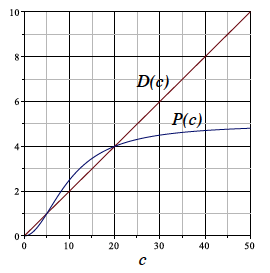Science:Math Exam Resources/Courses/MATH102/December 2014/Question C 02 (b)
{{#incat:MER QGQ flag|{{#incat:MER QGH flag|{{#incat:MER QGS flag|}}}}}}
• QA 1 • QA 2 • QA 3 • QA 4 • QA 5 • QA 6 • QA 7 • QA 8 • QB 1 • QB 2 • QB 3 • QB 4 • QB 5 • QB 6 • QB 7 • QC 1 • QC 2(a) • QC 2(b) • QC 2(c) • QC 2(d) • QC 3 •
|
Make sure you understand the problem fully: What is the question asking you to do? Are there specific conditions or constraints that you should take note of? How will you know if your answer is correct from your work only? Can you rephrase the question in your own words in a way that makes sense to you? |
|
If you are stuck, check the hint below. Consider it for a while. Does it give you a new idea on how to approach the problem? If so, try it! |
Hint |
|---|
|
A steady state is stable if states that are initially close enough to that steady state will get closer to it with time. A steady state is unstable, if states that are initially very close to it eventually move away from that steady state. For example, if we start above(below) a steady state, and the derivative is positive(negative), then the state will increase(decrease) and eventually move away from the steady state so it is an unstable steady state. |
|
Checking a solution serves two purposes: helping you if, after having used the hint, you still are stuck on the problem; or if you have solved the problem and would like to check your work.
|
Solution |
|---|
|
To determine the stability of each steady state, we just need to find the increasing and decreasing regions. As represents the concentration of a substance, we only need to consider the positive half of the real axis. The three steady states divide it into three intervals
If we choose a initial condition in the interval , as is negative, would decrease and approach the steady state as time goes on. So is stable. Similarly, we find is unstable and is stable. |
{{#incat:MER CT flag||
}}















